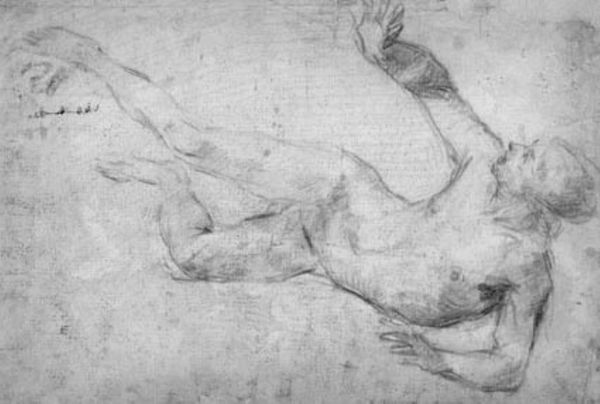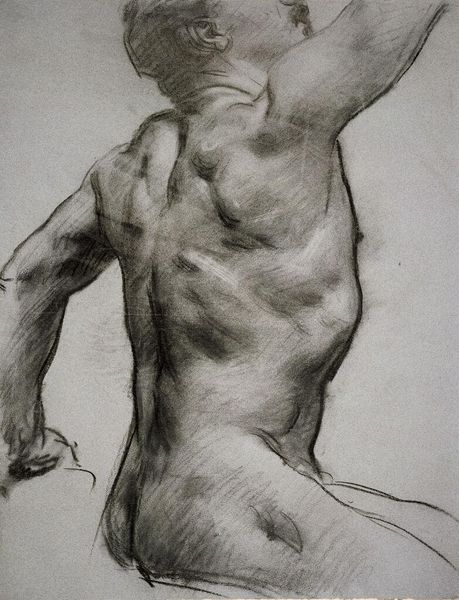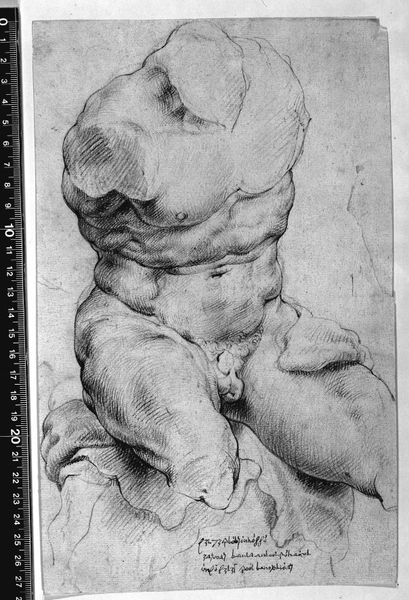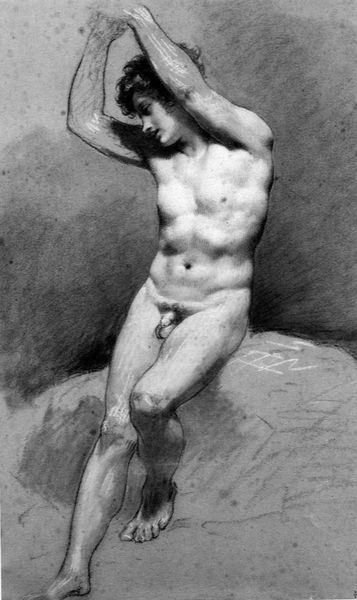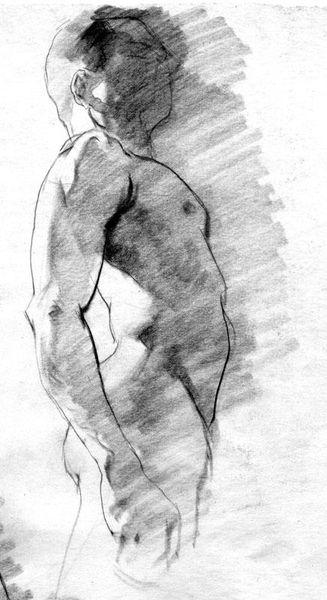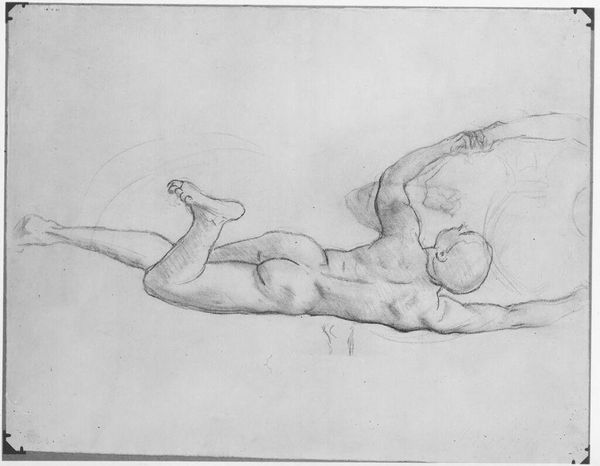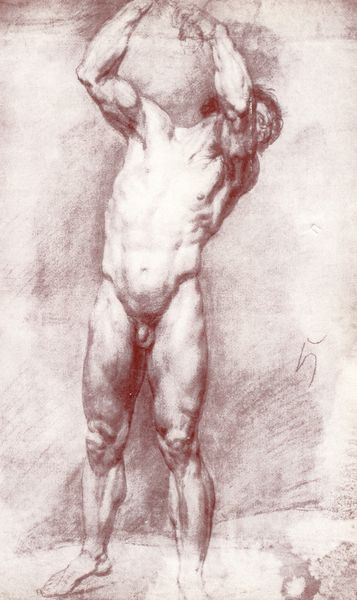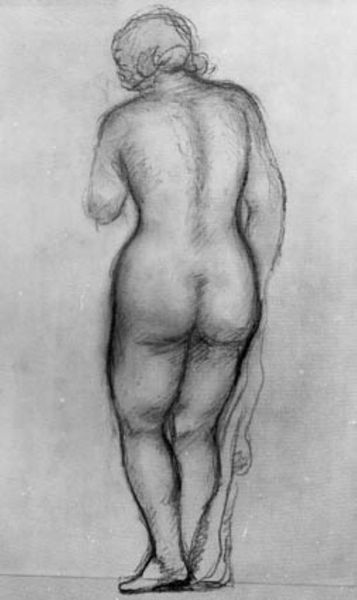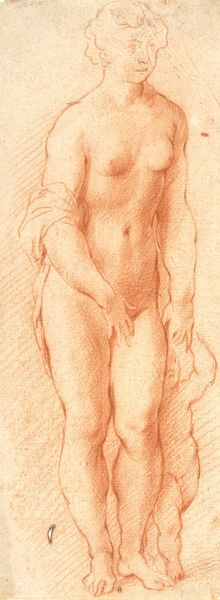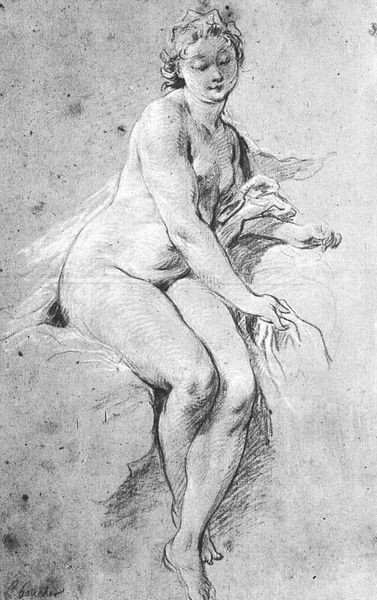
drawing, pencil
#
pencil drawn
#
drawing
#
mannerism
#
figuration
#
pencil
#
italian-renaissance
#
male-nude
#
monochrome
Copyright: Public domain
Editor: This is Annibale Carracci's "Triton Sounding a Conch Shell," created around 1597, a pencil drawing. The figure is really striking and muscular. What can you tell us about the context around it? Curator: It’s fascinating to consider this drawing within the context of late 16th-century artistic dialogues. Carracci, deeply rooted in the Italian Renaissance, here pulls on Mannerist conventions but infuses it with his own sensibilities. How might the mythological figure of Triton, often depicted as a subordinate sea deity, challenge or reinforce the social hierarchies of his time? Editor: I see. It is interesting that the pose is not very heroic. What do you mean by reinforce? Curator: Consider how idealized male nudes like this often served to embody power and authority. But Carracci's choice of Triton, not Poseidon himself, could be a subtle commentary. Are we celebrating divine power or interrogating its perceived perfection? Is this idealized masculinity accessible, or is it presented in a manner to highlight the difference between divinity and human condition? Editor: That’s a really interesting point. I guess I had never really considered those social dimensions within mythological painting. Curator: Exactly. And notice the drawing style. The emphasis on musculature, while classically inspired, verges on the exaggerated, a common trait in Mannerism. How does that stylistic choice impact our reading of the figure's virility, for example? Does it become almost grotesque, thus disrupting our comfortable consumption of ideal forms? Editor: So you're suggesting that Carracci is engaging in a kind of…subversion through this drawing? By tweaking conventions to reveal underlying tensions about class and power? Curator: Precisely! It's in these subtle visual cues that we find avenues for deeper intersectional interpretations of art. Hopefully this analysis reveals how the artist not only inherited existing cultural conditions, but engaged with its political context by pushing at its boundaries. Editor: That makes so much more sense now. Looking at it again, I can really see that play between idealization and almost, like you said, a distortion of form. It really broadens how I understand Renaissance drawings! Curator: Art gives us so much when we begin to interrogate its foundations and contexts, who benefits from the work, who suffers because of it, and who engages and has agency. It challenges us.
Comments
No comments
Be the first to comment and join the conversation on the ultimate creative platform.
